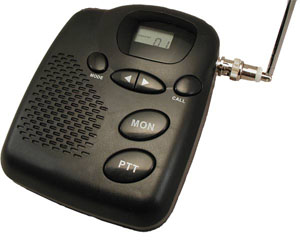 While the mobility of handheld two way radios is a good thing, there are times when you need a least one radio that is stationary. That’s where a two way radio base station comes in handy.
While the mobility of handheld two way radios is a good thing, there are times when you need a least one radio that is stationary. That’s where a two way radio base station comes in handy.
Desktop two way base station radios use wall AC power and they may have a built-in antenna, but this antenna may be disconnected and then connected to cable that leads to an external-mounted antenna. The higher the antenna is mounted, the better the range.
These radios are available in FCC-licensed UHF and VHF frequencies as well as the unlicensed MURS radio frequencies.
Like two-way radios, these base stations can have multiple channels. In some cases like the MURS radios, there are only 5 channels available. Other radios typically have up to 10 channels available, or you can program them to only use one channel.
One thing about a base station two-way radio is that when you press the Talk button and speak, everyone on that channel will hear you. If you have individual departments in your business that you want to separate, then this isn’t the ideal solution.
That’s where you can use the multiple channels on the base station radio. If you are in a manufacturing environment for instance, you could set up Channel 2 for Shipping, Channel 3 for the Office, Channel 4 for Manufacturing, and so on.

You can use the channels sort of like an intercom system that lets call individual people or groups instead of broadcasting a message to everyone. So the Shipping people keep their radios on Channel 2, but if they need to talk to people in the office, they change to Channel 3.
Some handheld radios also have a scanning capability that also works well for this type of application. You
can actually program the channels you want to scan, and the radio will only pick up conversations for the channels you have programmed.
In the example above say you add a Channel 1 as the Broadcast, Paging, or All Call channel. Now you set each radio to scan not only their department channel, but also the Paging channel as well. So if there is need to broadcast a message then anyone can change to Channel 1 and everyone hears the message. This is a great emergency notification system.
Some base station two-way radios in the VHF band allow you to receive weather broadcasts from the NOAA Weather Radio service if you are in a broadcast area. With this feature you’ll know instantly of approaching bad weather so you can alert others.
The two base station radios on the market right now are the MURS Multi-Mile Intercom and the MURS Commercial Intercom.
So when you need a two way radio that sits on someone’s desk, or mounts on a wall, a two-way radio base station may be the device you are looking for.
